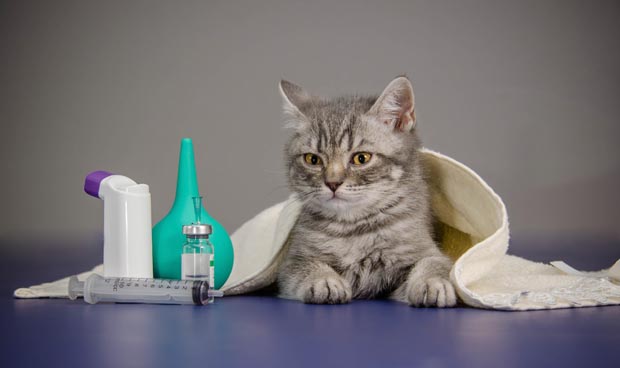
Photo by Kulkann
When an asthmatic attack occurs, it’s serious and causes significant panic in both humans and pets. This breathing condition tends to be much more of a problem in cats than in dogs.
The problem occurs in the very small breathing passages in the lungs. The passages are extensive and need to be small in order to supply red blood cells with oxygen. When they constrict and the pet cannot get air into the lungs, it’s considered an asthmatic attack.

Radiograph of a cat with asthma. Photo courtesy of LBAH.
Finding the cause of the constriction of these vessels can be frustrating. Some animals that are exposed to smoke, dusty cat litter, or a perfumed aerosol will get an attack. Allergies and stress are also causes.
Usual symptoms include wheezing, labored breathing, and coughing of varying severity. A normal cat has a resting respiratory rate of 30 breaths per minute, so keep track of your cat’s rate while it is lying around or sleeping, and bring in your findings for an exam if the rate goes above 35 to 40. This is a great way to minimize an emergency visit for an asthmatic attack.
An attack warrants immediate treatment with 100 percent oxygen and injectable medication called bronchodilators to open up the breathing passages. Long-term control includes weight loss if the cat is obese, antiinflammatories, antibiotics, and avoidance of stress and allergens. The most effective long-term medication involves the use of an inhaler called Salbutamol.
Our pet-asthma web page includes instructive photos and lots more information on asthma.

